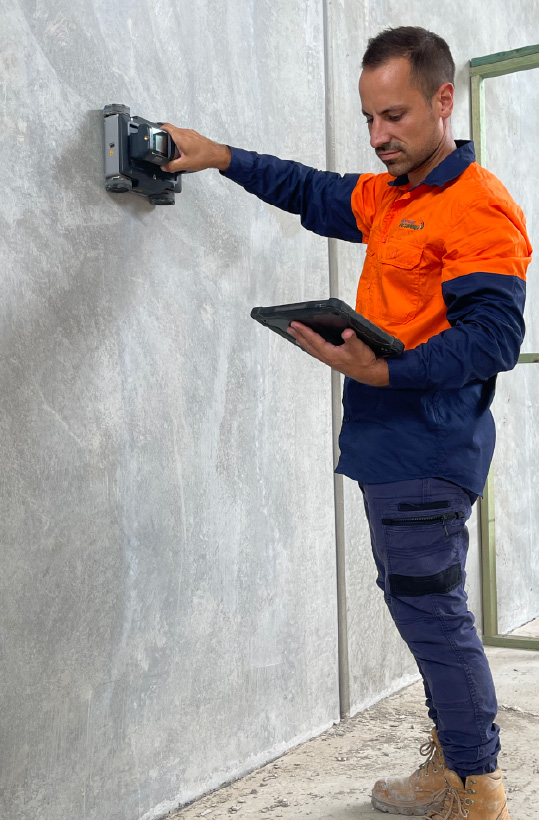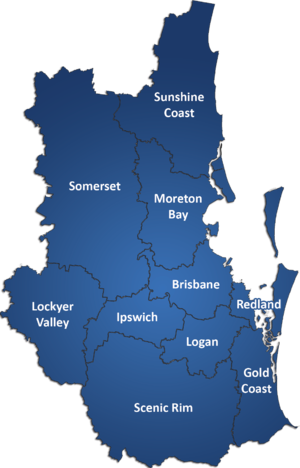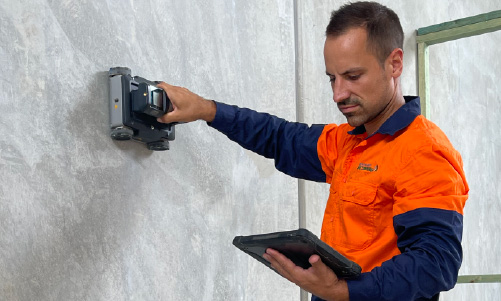Think You Know What’s Beneath Your Concrete? Think Again.
When it comes to renovating, extending, or upgrading a property, what you can’t see beneath the surface can cost you thousands. Hidden rebar, electrical wiring, or post-tension cables can turn a simple project into a dangerous and expensive mistake. That’s where concrete radar scanning comes in — the smart, non-invasive way to uncover what lies beneath before you drill, cut, or demolish.
- In this blog, you’ll learn:
- What concrete radar (GPR) is and how it works
- Why it’s essential for safe and efficient renovations, extensions, and retrofits
- Common applications and real-world examples of radar scanning
- How concrete radar helps save time, money, and headaches on site
- Tips for choosing the right concrete radar provider for your project
What is Concrete Radar?
Concrete radar is a non-destructive scanning method that uses radar pulses to detect objects, voids, and structures within concrete. Unlike traditional methods that require drilling or breaking surfaces, GPR allows professionals to visualise what’s hidden inside walls, floors, and slabs without damaging them.But with such complexity below the surface, there’s a hidden danger: accidentally striking these critical elements during drilling, coring, or cutting. The consequences? Structural failure, costly delays, serious injury, or worse.
That’s why Ground-Penetrating Radar (GPR) scanning isn’t just helpful -it’s essential. Southeast Scanning specialises in mapping reinforcement layouts in slabs, beams, and columns to protect what matters most: your people, your budget, and your structure’s integrity.
Common applications of concrete radar include:
Locating steel reinforcement, rebar, and post-tension cables
Detecting conduits, pipes, and electrical wiring embedded in concrete
Identifying voids, cracks, or other structural anomalies
By providing accurate, real-time data, concrete radar helps project teams make informed decisions and plan renovations or extensions more efficiently.
Why Concrete Radar is Essential for Renovations
Renovations often involve altering or removing sections of existing concrete. Without knowledge of what lies beneath, contractors risk hitting embedded steel, pipes, or wiring, which can cause:
- Structural damage
- Electrical hazards
- Delays and additional costs
Concrete radar eliminates these risks by mapping the concrete in detail before any work begins. This ensures that demolition, drilling, or cutting is done safely and accurately, protecting both workers and the structure.
Planning Extensions with Concrete Radar
For extensions, knowing the condition and layout of existing concrete is critical. Concrete radar can reveal:
- Thickness and depth of slabs
- Location of reinforcement and embedded services
- Potential voids or weaknesses
This information allows engineers and builders to design extension foundations and connections with confidence, ensuring that new structures integrate seamlessly with existing ones.


Retrofits and Upgrades
Many older buildings require retrofits to comply with modern standards or improve functionality. Concrete radar is particularly valuable for:
- Locating post-tension cables before installing new fixtures
- Planning electrical upgrades without damaging existing wiring
- Avoiding unnecessary concrete removal when creating openings or trenches
By using concrete radar, retrofits can be completed safely, efficiently, and with minimal disruption to existing structures.
Benefits of Using Concrete Radar
- Safety: Identifying hidden obstacles prevents accidents and protects workers on site.
- Efficiency: Knowing the internal layout of concrete saves time and reduces delays.
- Cost-Effectiveness: Avoiding damage to embedded services or reinforcement prevents costly repairs.
- Accuracy: Provides precise measurements of slab thickness, rebar spacing, and embedded utilities.
- Non-Destructive: Keeps concrete intact, reducing the need for patching or replacements after scanning.
How the Scanning Process Works
Concrete radar scanning is straightforward and non-invasive. This process ensures projects are planned with complete awareness of potential obstacles and structural considerations.
2
Scanning
The radar device is moved across the concrete surface, emitting pulses that detect embedded objects and anomalies.
3
Data Interpretation
The radar collects data, producing images that show the location and depth of reinforcement, conduits, or voids.
4
Reporting
A detailed report is provided to builders, engineers, or architects for planning and decision-making.
Common Applications in Residential and Commercial Projects
Residential Renovations
- Kitchen and bathroom remodels where concrete floors or walls need cutting
- Installing anchors, staircases, or built-in furniture without damaging rebar
- Planning extensions to existing homes
Commercial Projects
- Office or retail fit-outs that involve drilling, coring, or wall modifications
- Structural retrofits in older commercial buildings
- Installing heavy equipment or machinery that requires precise knowledge of slab reinforcement
Choosing a Trusted Concrete Radar Provider
Selecting an experienced provider ensures accurate scans and actionable insights:
- Look for certified operators with experience in local building conditions.
- Ensure providers use modern, calibrated radar equipment.
- Check references or case studies from past projects to verify reliability.
A trusted provider delivers precise data, clear reports, and professional guidance, enabling safer and more efficient construction outcomes.
Practical Tips for Using Concrete Radar
- Plan Ahead: Schedule scans early in the project to avoid delays.
- Mark Scan Areas: Clearly identify areas where renovations or openings are planned.
- Communicate Findings: Share scan results with all contractors and engineers involved.
- Follow Recommendations: Use provider guidance for safe cutting, drilling, or removal.
Following these steps maximises the benefits of concrete radar and minimises project risks.
Practical Scenarios Where Concrete Radar Saves Time
Concrete radar is especially valuable in complex renovation scenarios. For example, in multi-storey buildings, knowing the exact location of rebar and post-tension cables before drilling or coring prevents structural compromises. Similarly, when retrofitting commercial properties with new HVAC or plumbing systems, radar scans can reveal hidden pipes and conduits, reducing unexpected delays and costly damage. These real-world applications highlight how radar technology streamlines planning and execution for both residential and commercial projects.
Cost-Effectiveness and Risk Reduction
Using concrete radar early in a project can significantly reduce overall costs. Avoiding accidental strikes to embedded utilities, rebar, or conduits prevents expensive repairs and delays. In addition, accurate scans reduce the need for guesswork, which often leads to over-preparation or unnecessary removal of concrete. By identifying potential challenges before work begins, project teams can allocate resources more efficiently and minimise unexpected expenses, making concrete radar an investment that pays for itself.
Integrating Radar Data into Renovation Planning
Concrete radar data can be seamlessly integrated into digital planning tools, such as CAD or Building Information Modelling (BIM) software. This allows engineers, architects, and contractors to visualise both existing structures and proposed modifications in a single model. By combining radar scans with detailed project plans, teams can simulate interventions, identify potential conflicts, and ensure that every cut, drill, or modification is executed safely and accurately. This integration maximises efficiency and helps deliver renovations and extensions that meet design, safety, and regulatory standards.
The Future of Renovation Planning
As construction technology advances, tools like concrete radar will become increasingly integrated with other planning systems, such as BIM and 3D mapping. Combining radar data with digital models allows project teams to:
- Plan precise interventions in complex concrete structures
- Simulate renovations before work begins
- Identify potential conflicts or hazards in advance
This technology-driven approach improves accuracy, safety, and overall project efficiency.
Southeast Scanning:
Specialists in High-Rise Safety
Concrete radar is an indispensable tool for planning renovations, extensions, and retrofits. By providing accurate, non-invasive insights into existing concrete structures, it helps prevent damage, ensures worker safety, and optimises project planning. From residential remodels to large-scale commercial retrofits, concrete radar provides the information needed to make informed decisions and deliver high-quality results.
Ready to plan your renovation or extension with confidence? Partner with an experienced concrete radar provider to ensure safe, efficient, and successful projects every time.







